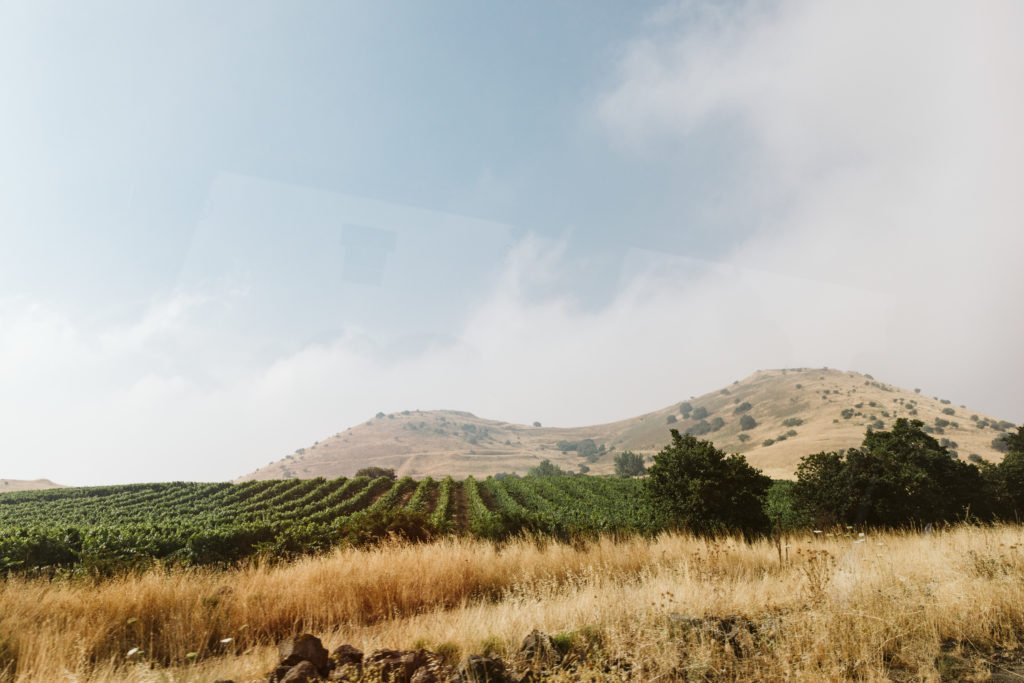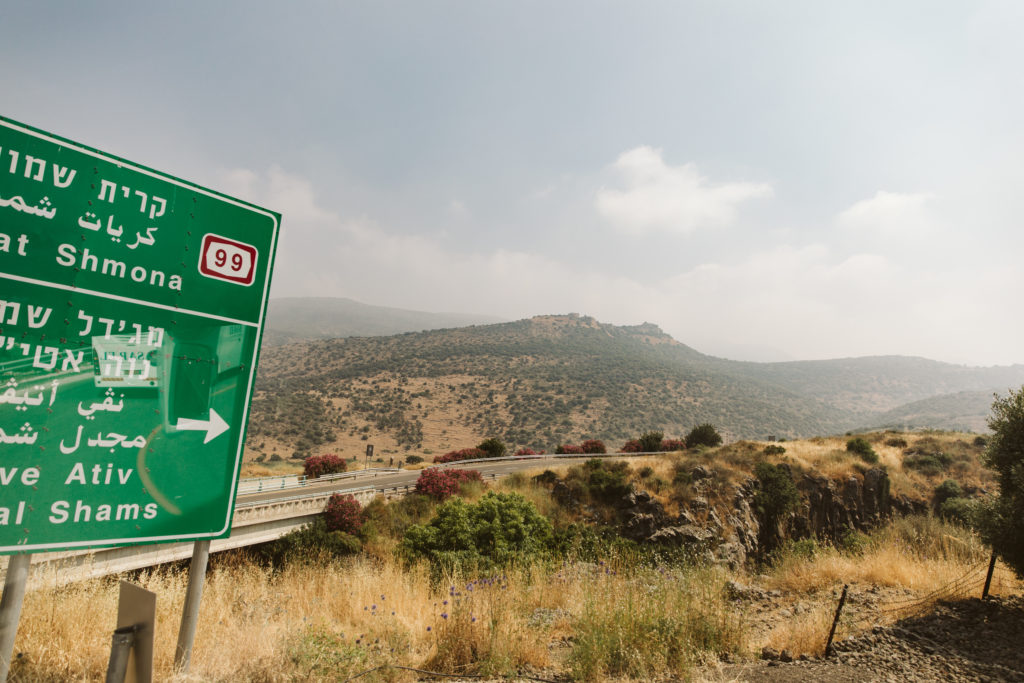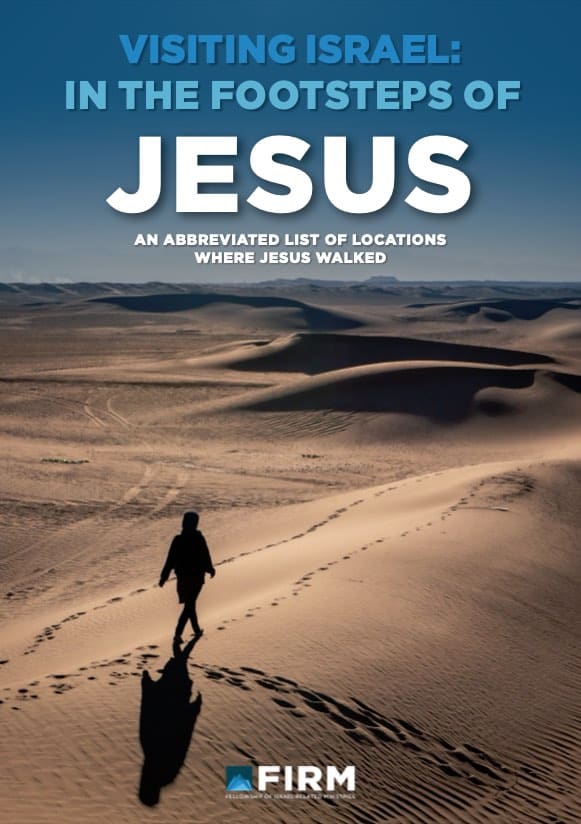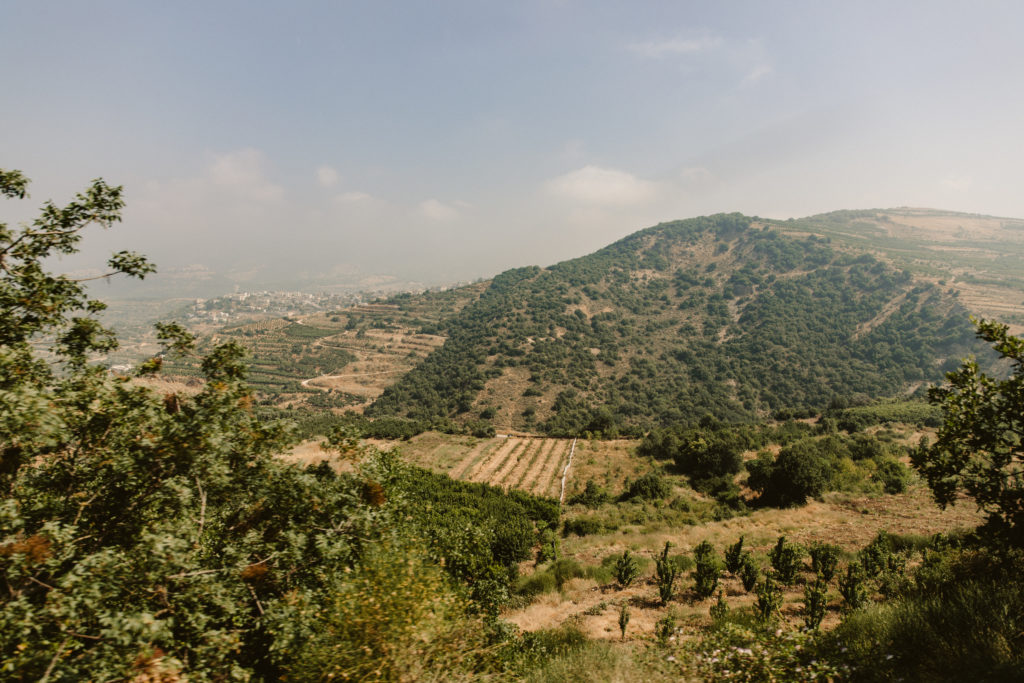The Golan Heights in the Bible
The Golan is known as Bashan in the Bible, referenced in Deuteronomy 4:43, 1 Kings 4:13, Psalm 22:12, and Isaiah 2:13 for example. This is where the half-tribe of Manasseh settled, and Golan is named as a city of refuge in Joshua 21:27.
The area was also not foreign to the Philistines, who chose the highest parts of the mountains for their idol worship. The Bible specifically mentions Mount Hermon in Judges 3:3 and 1 Chronicles 5:23 as home to the rulers of the Philistines.
These “high places” in the Golan were significant to cultures entertaining idols. It was thought that the higher the point, the holier it was.
Later on, prophet Elijah and the righteous kings Hezekiah and Josiah torn down these type of ‘high places of worship’. They confronted idol worship of the Canaanite gods.
Where is the Golan Heights?
The Golan Heights is a strategic point in the north of Israel. Bordering with Lebanon and Syria, it is a critical area for the security of Israel. But it was also a crucial area of land already in biblical times.
The Golan Heights in Israel Today
Following the Six-Day War in 1967, Israel seized nearly two-thirds of the Golan from Syrian control. This area is a strategic point to secure the northern border of Israel and historically has been a contested area.
You may remember headlines in 2019 when the United States made a bold declaration recognizing Israel’s annexation of the Golan Heights.
A good friend of mine in the U.S. military told me the Golan Heights is one of his favorite places in all of Israel.
Not only is this area important from a military perspective as a prime lookout. It also has some of the most breathtaking, and yet contrasting, views in the Land. You can see both rolling hills and Syrian fortresses in the Golan.
Mount Hermon
Mount Hermon is Israel’s highest mountain, sitting on the highest part of the Golan Heights. Snow-capped in winters, this summit is home to Israel’s only ski resort in the winter. That’s because it stands at nearly 10,000 feet tall!
Here the Jordan River begins on its journey, flowing south into the Sea of Galilee almost 60 miles away. The dew of Hermon described in Psalm 133 paints a picture of majesty and beauty:
“Behold, how good and pleasant it is when brothers dwell in unity! It is like the precious oil on the head, running down on the beard, on the beard of Aaron, running down on the collar of his robes! It is like the dew of Hermon, which falls on the mountains of Zion! For there the Lord has commanded the blessing, life forevermore.”

Can you imagine the view David had as he wrote this psalm, looking to the height of Mount Hermon in the north? He was envisioning the stream of water flowing and making its way south to the mountains of Zion in Jerusalem.
David likened this gentle stream to a blessing that flows like oil running down the beard of Aaron the high priest. He meant the blessing of brothers sitting in unity, where the Lord commands life forevermore.
Caesarea Philippi and Dan
Have you ever wandered through the Golan Heights with a Bible in your hand? You inevitably reached the city of Caesarea Philippi at the base of Mount Hermon.
This Greco-Roman city was located near the ancient city of Dan. Do you remember the corrupt king Jeroboam who made two golden calves? He set one in Bethel and the second one in Dan (1 Kings 12:25-33).
This foundation of idol worship gave way to Dan becoming a center of Baal worship in the region of the Golan Heights in the Bible. Meanwhile, the Israelites became attracted to fertility cults and allowed the city to become a pagan stronghold.
Taken on a Journey
In Matthew 16 we find Jesus taking His disciples to Caesarea Philippi. The backstory on this city is very significant to the greater meaning of this passage. To set the stage for you, this is where Herod the Great built the Temple of Augustus in 19 BC in honor of Caesar.

The temple was carved into a natural rock formation in front of a cave containing a natural spring.
The cave was believed to be resided by the Greek god Pan, giving the city its name Panias, or Banias as it is named today. Worship of Pan, god of the goats, included vile acts linked to lust, fertility, and animal sacrifice.
It is said that this city was so wicked that the rabbis forbade Jews to come to this area.
But Jesus brings His disciples precisely to this setting in Matthew 16. They probably spent days walking the 25-mile journey north from the Galilee through the Golan. Perhaps this long distance permitted Jesus to remind His disciples of the pagan stronghold this area was.
It dates all the way back to the days when the tribe of Dan settled in the region. This Israelite tribe compromised their faith by allowing syncretism to seep in.
Divine Conversation in the Golan Heights in the Bible
In the midst of idol worship and the celebration of a false god, Jesus asks His disciples: “Who do men say that I am?” He purposely took them to a setting that exemplified such lewd acts of pagan sacrifice and immorality that would make our modern-day sin cities look juvenile. Yet Jesus took the opportunity to draw a great distinction between the Kingdom of light and the kingdom of darkness.
Peter answered Jesus’ question with the proclamation that He is the Messiah, the Son of the Living God. To which Jesus replied, “flesh and blood have not revealed this to you… and on this rock I will build my Church.” (Matt. 16:17-18)

Perhaps Jesus was pointing to the very rock formation where the pagan peoples built the temple to the Greek god Pan. This “rock” contained what visitors deemed the “gates of hell”. It was a natural spring with flowing water believed to be a gateway to the underworld.
The Strength of the Church
“The gates of hell shall not prevail against it.” When Jesus said these words perhaps He was using the imagery of a physical place to exemplify a greater spiritual reality. In the Golan Heights He pointed out that no evil, no idol, and no false god will stand against the greatness of His Body – the Church.
Jesus was drawing the attention of His disciples to a visible, existing clash between the forces of good and evil. He wanted His listeners to realize that the enemy is very real and extremely dark. But that is not where the true power lies.
The strength to overcome and victorious power has been offered to anyone who believes that Jesus is the Son of God. It started with the revelation given to the apostle Peter in the Golan Heights, and today, through the Holy Spirit, it belongs to all of us.
Travel the Land where the Word Comes Alive
The next time you read some of these passages in your Bible, remember the God of the Book still speaks today. Ask Him to reveal treasures in His Word.
Take time to study the geography of the Book and get wrapped up in the story. God’s Word is alive and active today. And the Holy Spirit is ready to speak a fresh word in stories you may have read countless times before.

Visiting Israel: In the Footsteps of Jesus: Free PDF Download
It is quite exciting to think that while touring Israel you are walking on the same land that Jesus did.
Whether it is the reason why you came to Israel or not, it is worth noting which locations were significant to His life and ministry. God chose this piece of land to send His Son to live on earth. Many archeological findings confirm the locations mentioned in the Bible.
Articles Related to Golan Heights
Estimated reading time: 7 minutes

